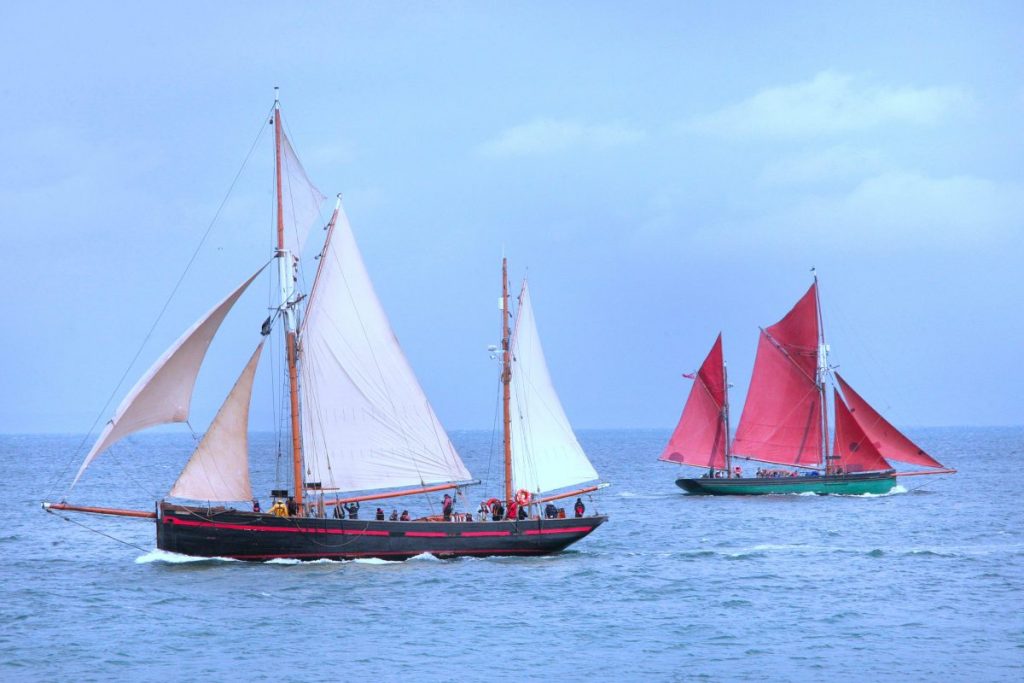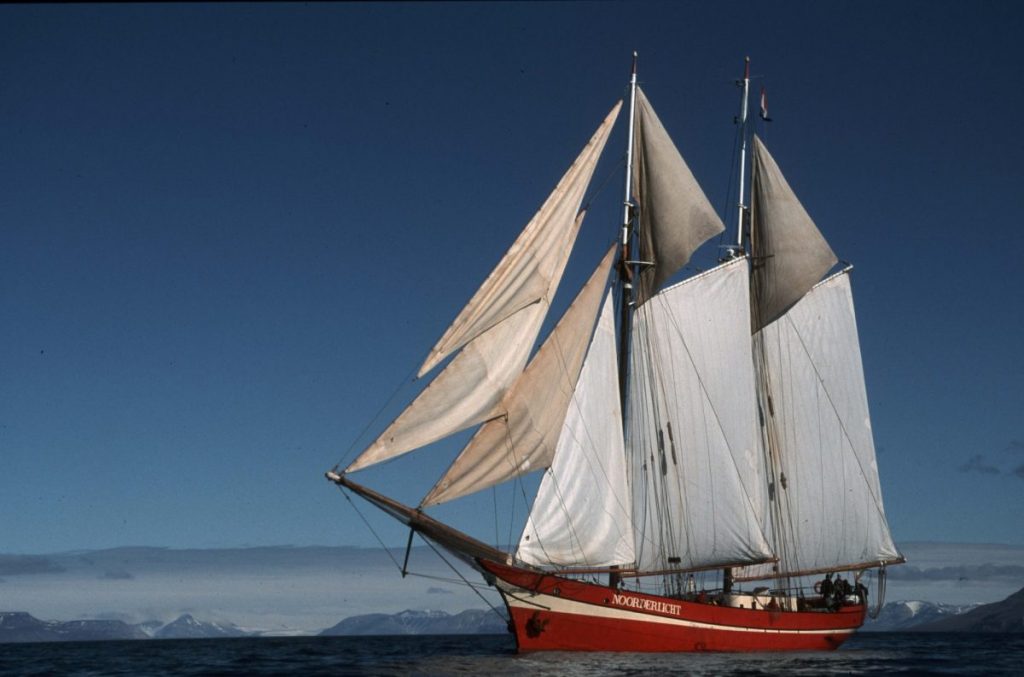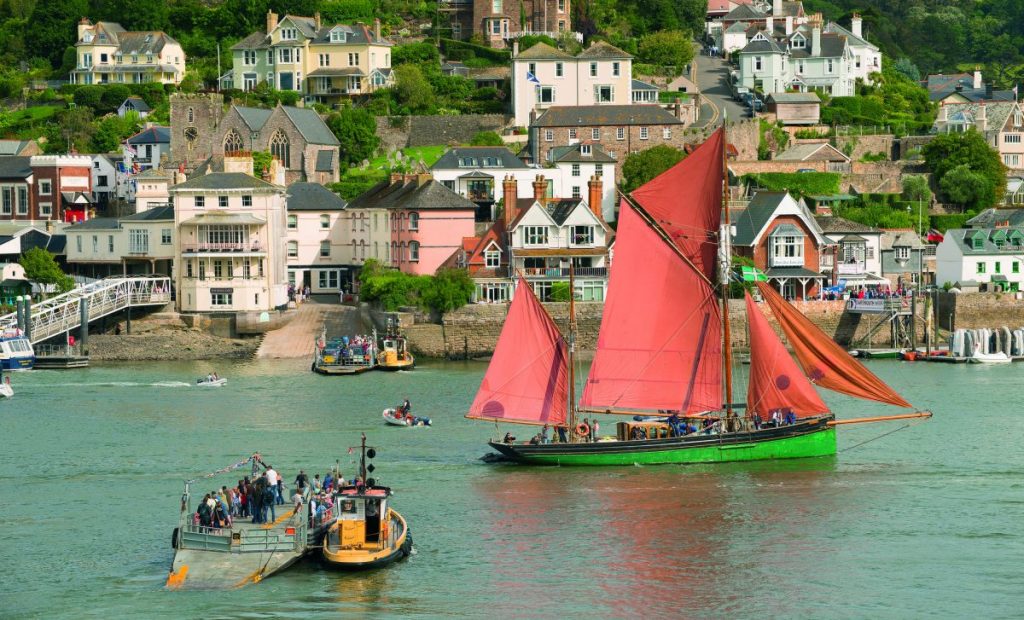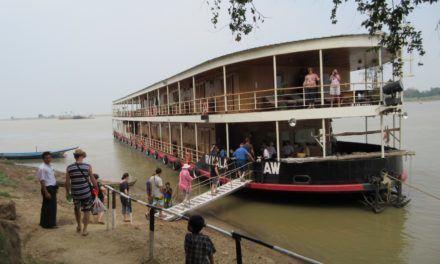Sailing on Old Ships
by Ted Scull.
Let’s begin with something land-based.
Years ago when I was looking to buy a New York apartment, and long before the gentrification of many neighborhoods, I contacted real estate agents specifying pre-war only. This meant I wanted an older building constructed before WWII.

Former Brixham trawlers provide heritage sailing. * Photo: Trinity Sailing
Why Old Ships?
With age comes, at least to me, a more attractive building to look at, usually better craftsmanship inside and out, higher ceilings, more soundproof walls, attractive molding framing the doors and ceiling, and maybe larger rooms. Some of the older apartments I inspected were in better shape than others. I wanted, except for painting, move-in condition and didn’t want to have to replace the wiring, plumbing, and appliances.
My wife and I found our dream home, and decades later, we remain happily ensconced and have no thought of moving.
Okay, Not All of Us Think This Way
I realize many folks want a new building for all the obvious reasons, and that might also translate into choosing the latest ship, one with all the bells and whistles.
The new vs older ship debate can be a bit more complicated. While there may be little argument about many older ships looking more pleasing compared to some built today that resemble densely-packed condos — with almost no pointy bow and walls of cabins piled high virtually the length of the ship and at the stern — there’s no debating that old ships often require more maintenance.
Ships take an increasing amount of investment to keep them sailing safely, and as they plow through varying types of seas, they endure more pressure on their superstructures, internal divisions, plumbing, wiring and mechanical equipment than any stationary building on land.
The building I live in is over 90 years old, and is in excellent shape, while few ships last more than 30 or 40 years. They often get downgraded as they reach a certain age.
So, where can we throw all that to the wind?
Sailing Ships Age Well
One possible exception, is the sailing ship. In many cases they have been refitted from an earlier life to become a cruise ship, while still maintaining the maritime character not found in new ships. They provide an authentic sailing ship experience, albeit with added modern comforts, and likely operate an auxiliary engine to kick in when the wind dies, as most people need to be somewhere else at some point.
Built for a Different Purpose
Quirky Cruise covers a number of sailing vessels that came into this world for a distinctly different purpose. Here’s a look:
Sea Cloud Cruises. Let’s start at the top end for luxury-minded with the former private cruising yacht Sea Cloud, once belonging to the cereal heiress Marjorie Meriwether Post and operating as an extremely popular cruise ship for 40 years.
Built in 1931 as the Hussar, the Sea Cloud is largely authentic to its period with original dining and lounge spaces, eight luxury cabins as built, plus 26 smaller units added to make the now commercial ship turn a profit. Standing on deck with the sails up, she takes you back in time to a more elegant world. She’s pricey, so let’s look at some others.
*Note: Our Sea Cloud review does not list the lines that regularly charter her, and many will likely book through one of them or through an alum, museum group, than directly through the line Sea Cloud Cruises.

Sea Cloud, originally built in 1931 as a private yacht. * Photo: Sea Cloud Cruises
Oceanwide Expeditions operates the Rembrandt van Rijn built early in the 20th century as a herring lugger and refitted in 1994 as a three-masted Dutch schooner for cruising in the Arctic. Running mate Nooderlicht, originally designed as a light vessel in 1910, was refitted as a two-masted cruising ship for the same northern waters. With handsome profiles, wonderful wood-paneled interiors and cozy cabins with comfy bunk beds, you will be transported back to an earlier time.

Noorderlicht. * Photo: Oceanwide Expeditions
Trinity Sailing operates a trio of once highly innovative Brixham (Devon UK) trawlers, once numbering in the thousands, that transformed Britain’s fishing fleet into a huge financial success. Now they offer coastal cruises amongst the British Isles. Operating also as a registered charity, they also take school aged children from all backgrounds on sail training courses to help advance their confidence, skills and teamwork and make new friends. Leader built 1892, 12 passengers; Golden Vanity b. 1908, 7 passengers; and Provident b. 1924, 12 passengers.

Brixham heritage trawler in the River Dart, Dartmouth in Devon. * Photo: Trinity Sailing
Silhouette Cruises, in the Indian Ocean, converted a 1915 former sail-powered fishing boat into Sea Pearl (27 passengers) and a 1920 pilot vessel into Sea Shell (23 passengers) for interisland sailing in the Seychelles.

What could be more romantic than an heritage sailing vessel among the Seychelles? * Photo: Silhouette Cruises
Follow Up
In an upcoming post, we will cover our small engine-powered cruise ships that reveal their heritage as working ships and offer a real time look into the past.
Don’t miss a post, subscribe to QuirkyCruise.com for monthly updates!
© This article is protected by copyright, no part may be reproduced by any process without written permission from the author. All Rights Reserved. QuirkyCruise.com.













 HEIDI SARNA
HEIDI SARNA











